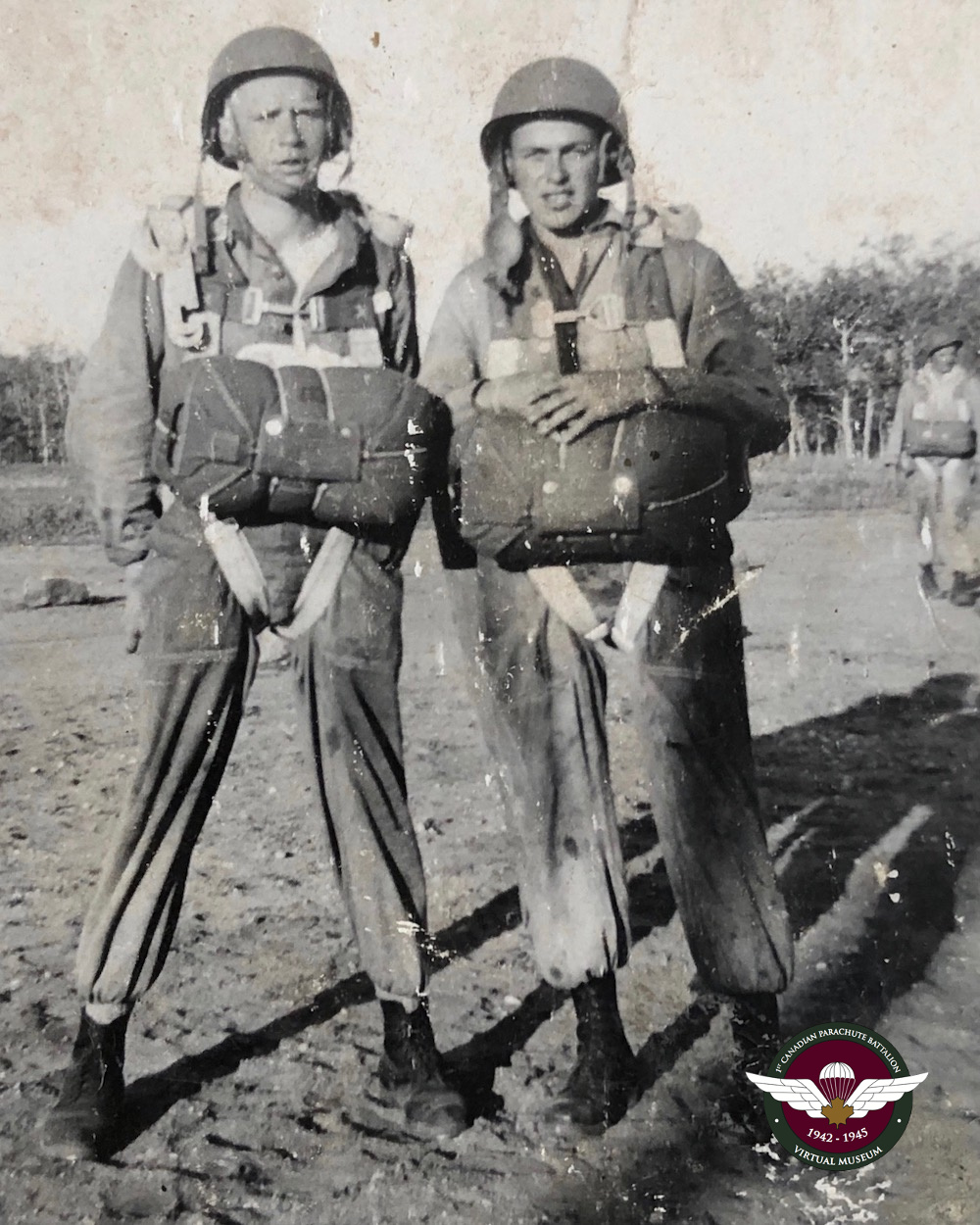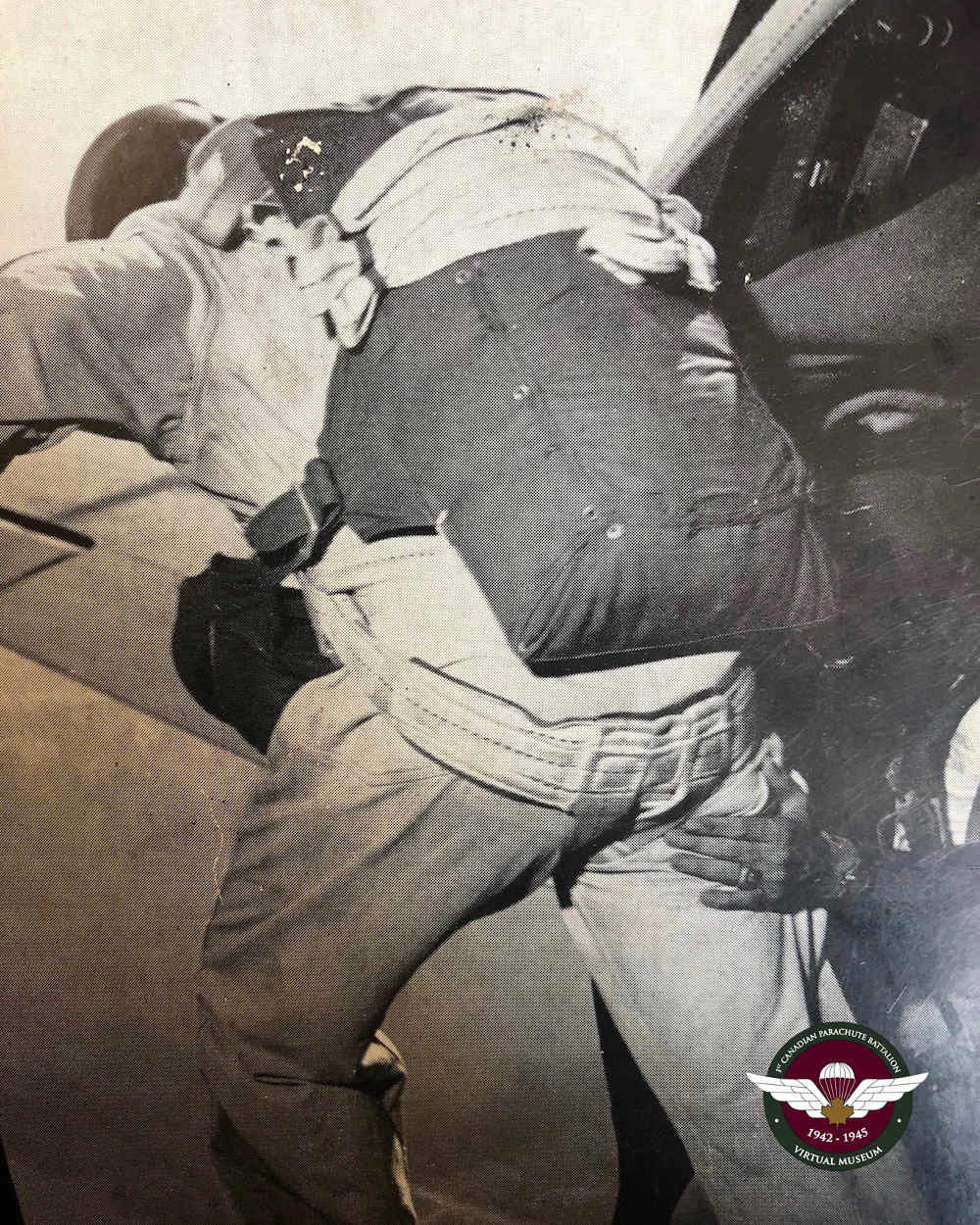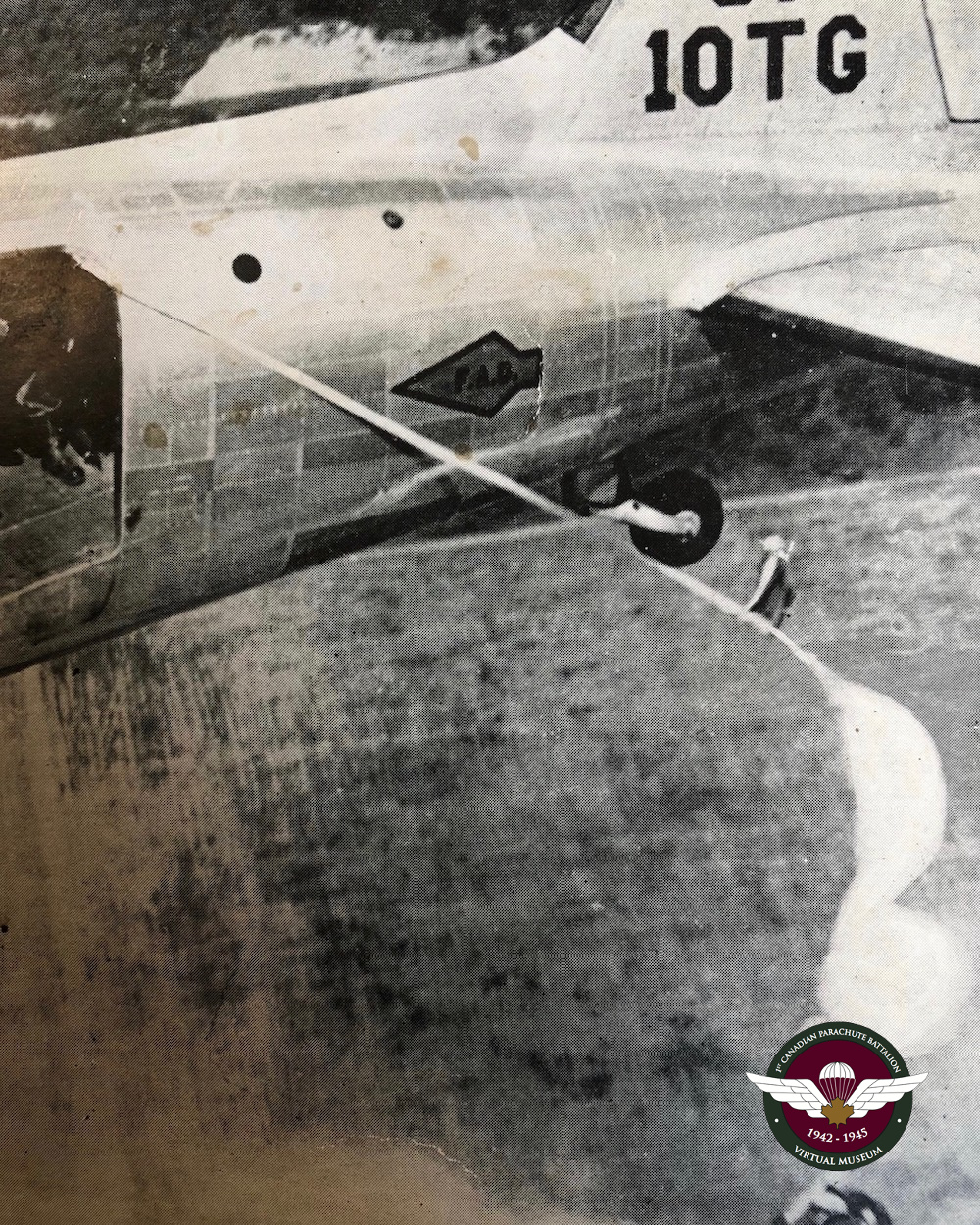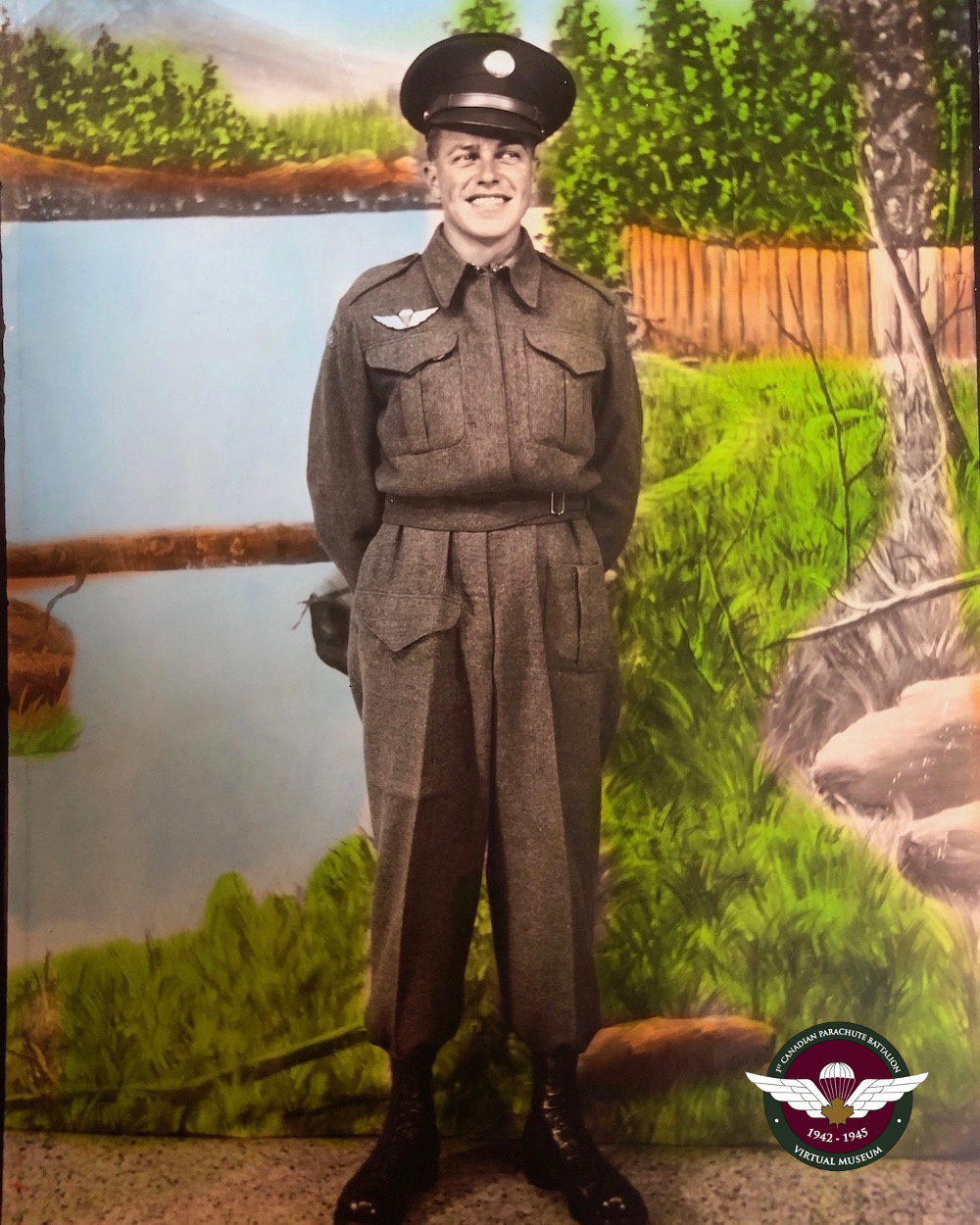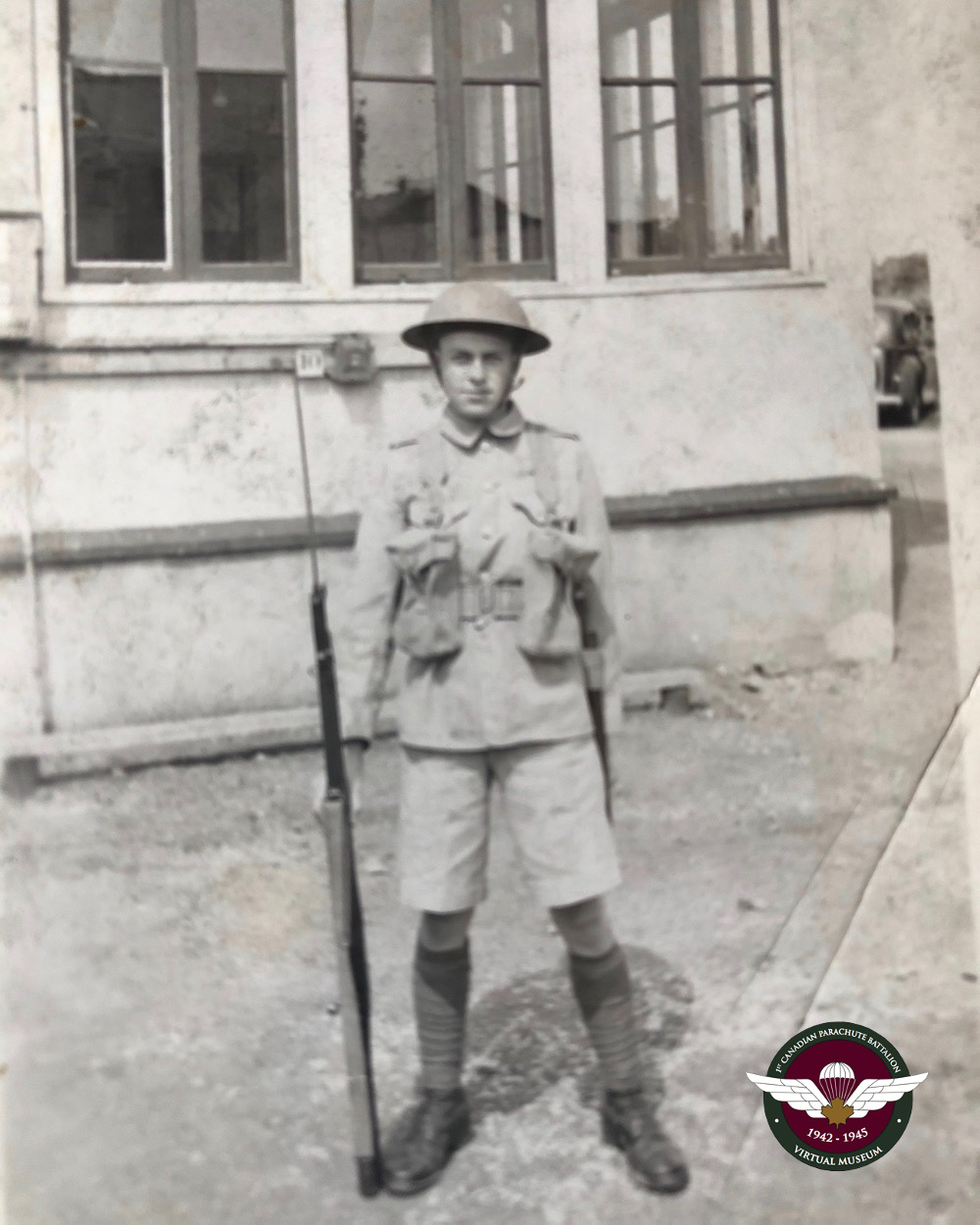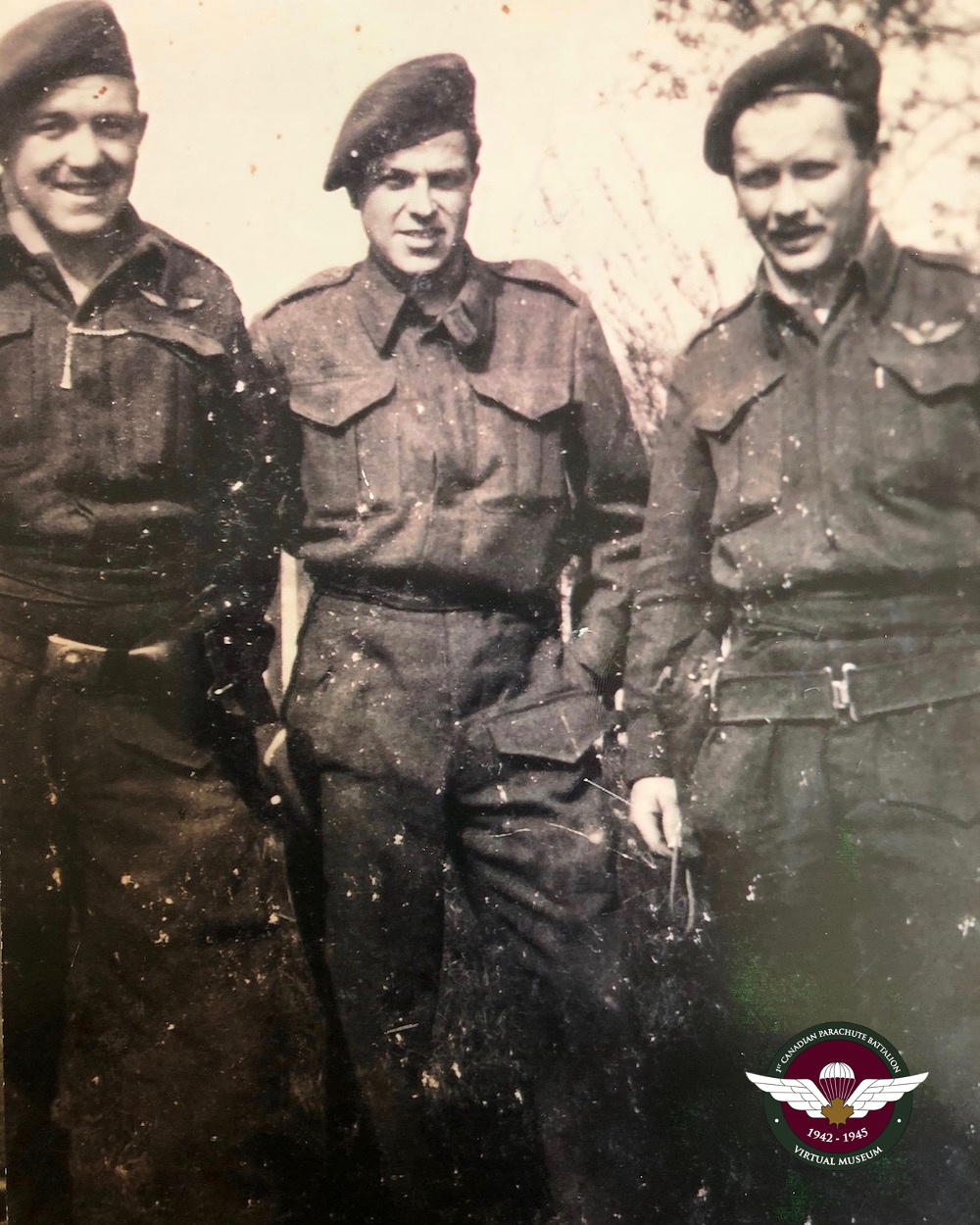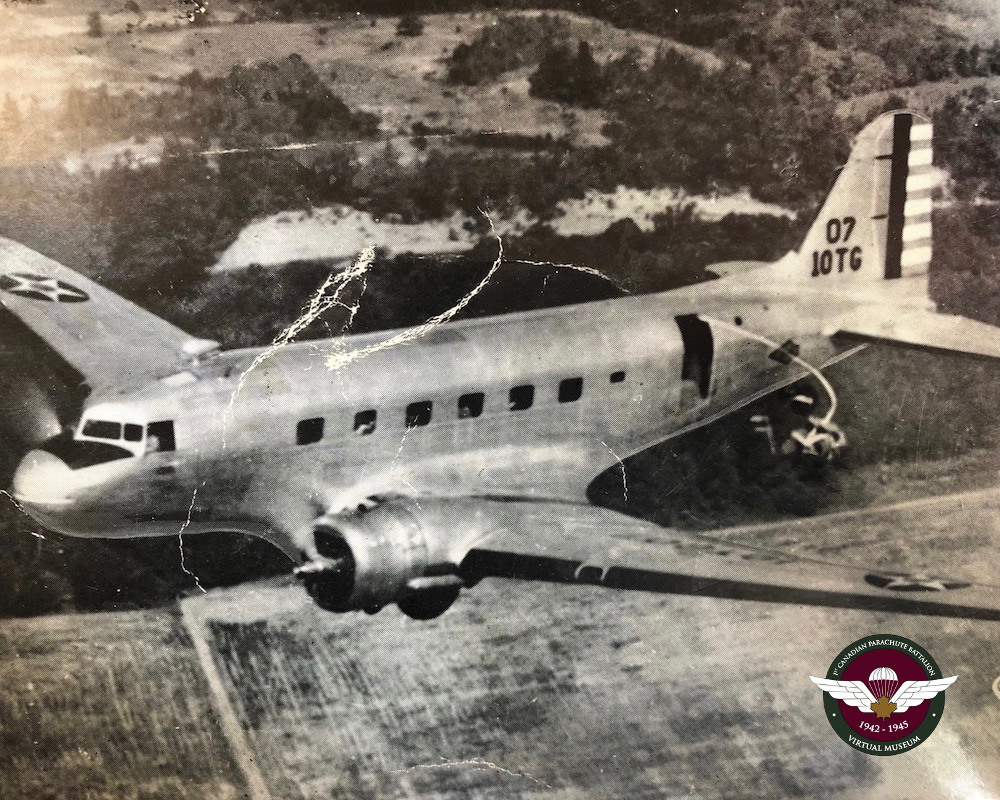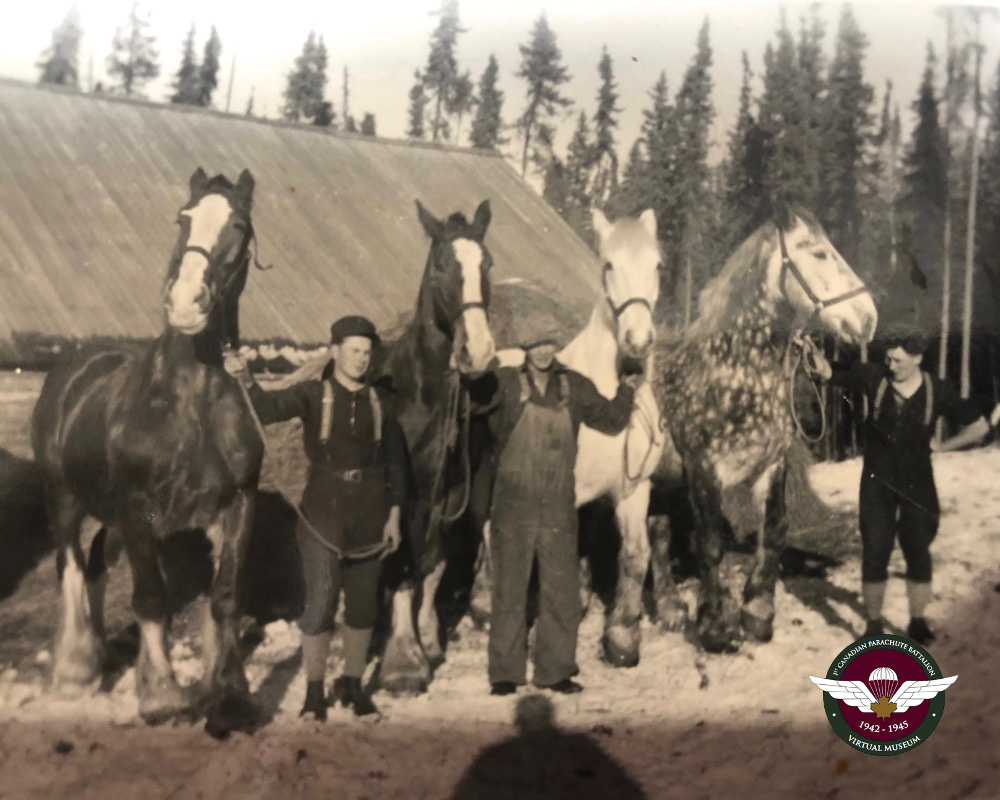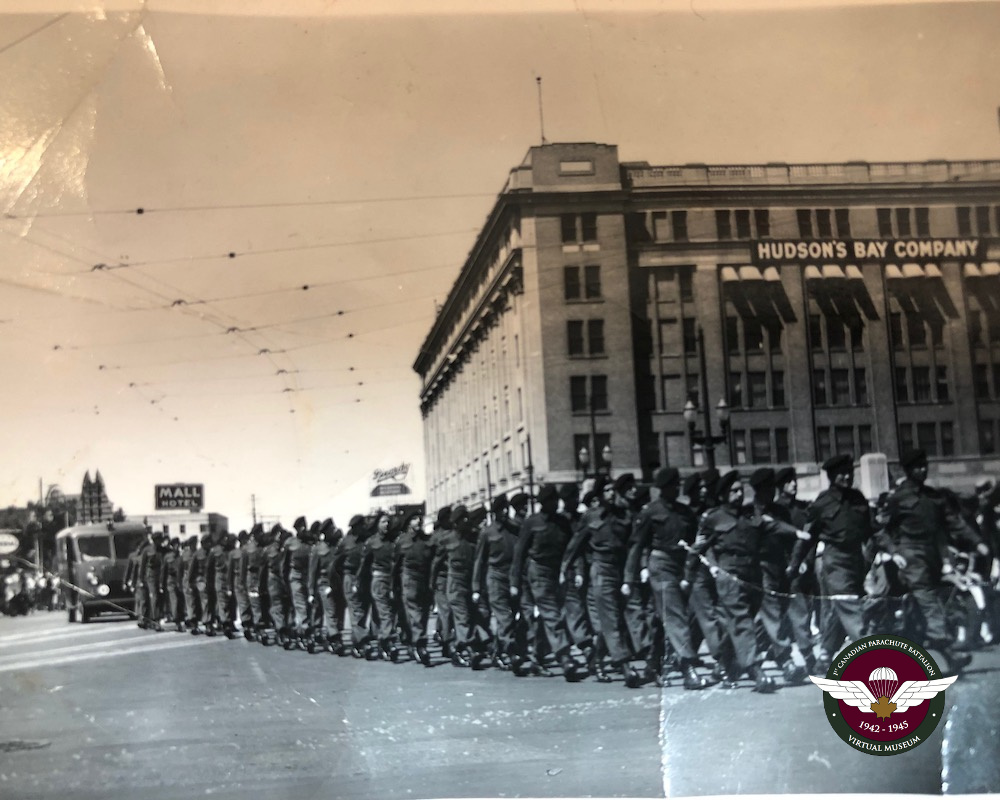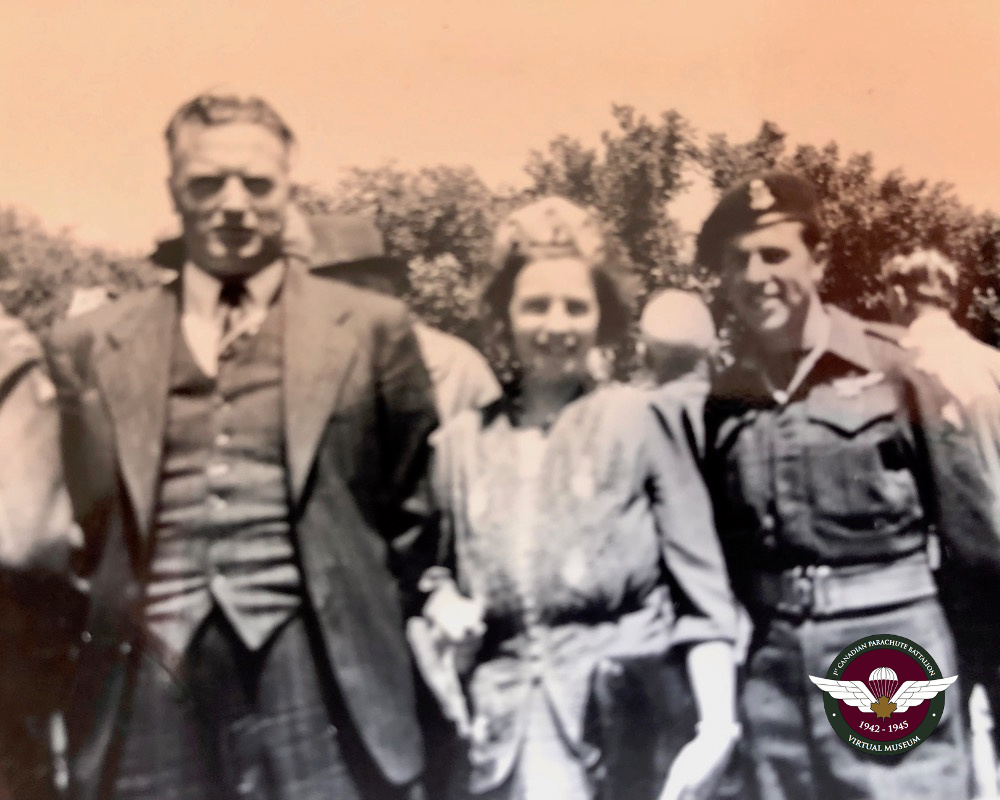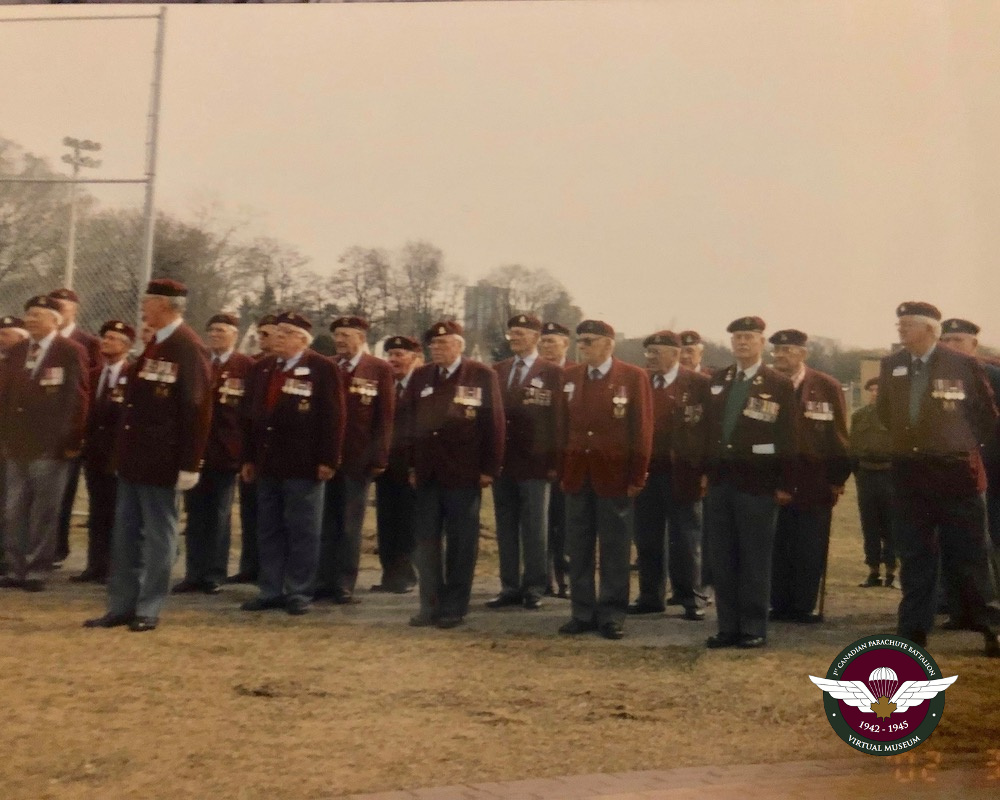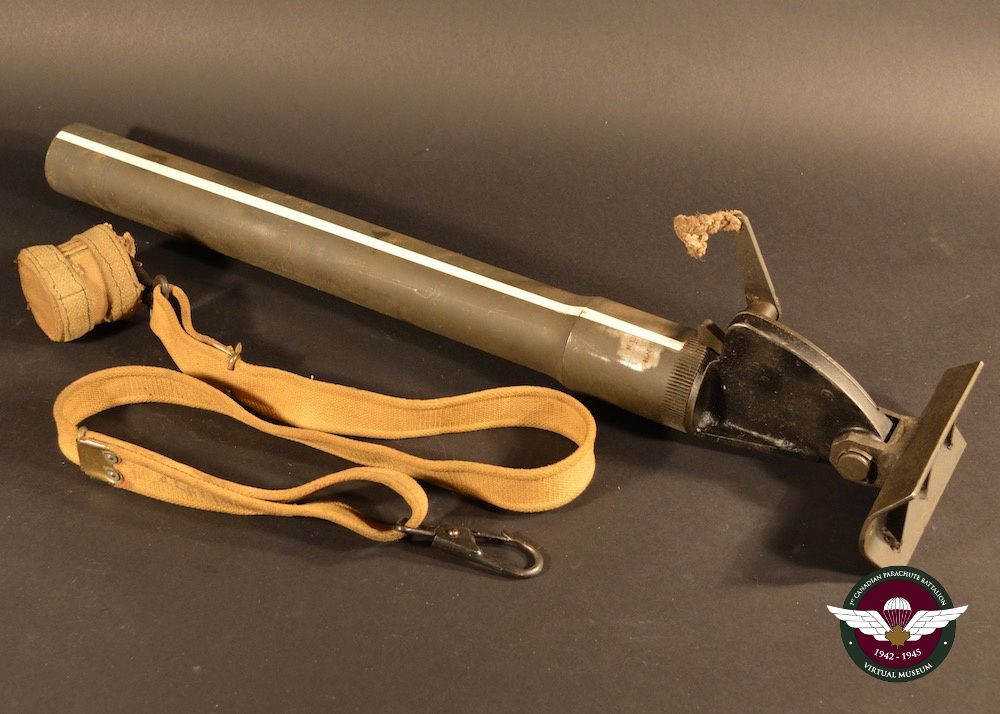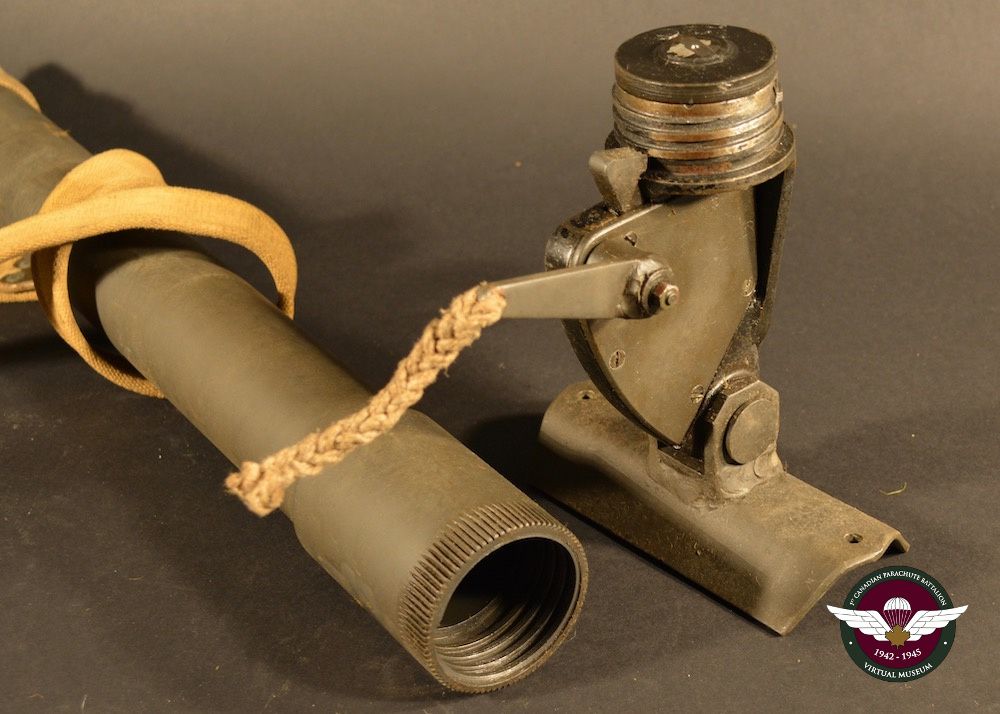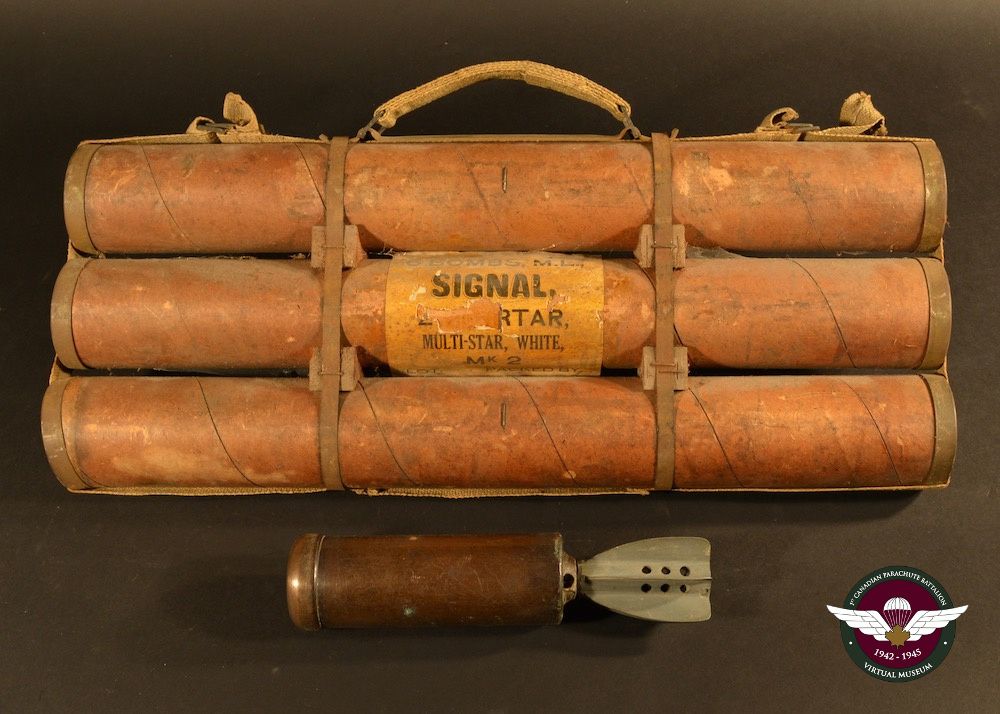Private Gordon Duncan McIntyre
Gordon Duncan McIntyre was born in Russell, Manitoba on February 9th, 1924. He was the second child of five born to Muriel Ivy and Adam Duncan (“Dunc”) McIntyre, who also had two younger sons and two daughters. When he was six years old, Gordon’s family moved to Vista, in the municipality of Rossburn, where from 1929-1945 his father worked as a grain buyer for United Grain Growers Ltd. Gordon attended Islay School in the Vista district, ending his education in Grade 10. During his youth, he preferred the outdoors to study and was happy helping local farmers with their harvests.
He developed a lifelong love of both summer and winter sports, including baseball and curling. His sister’s memories of life in Vista give a sense of Gordon’s and his siblings’ experiences as children. She speaks of baseball games after dinner in the schoolyard, winter sleigh rides behind a dray, and skiing parties, during which they used homemade skis. When eventually a rink was built in the town they skated on weeknights and Saturdays, putting on their skates in a neighbor’s garage by a big wood stove. Being a very sociable person, Gordon also enjoyed the dances held in the surrounding small towns of southern Manitoba where, as a teen, he played drums with “The Dunc McIntyre Orchestra.” The Orchestra was led by his father, who played violin and included his mother and sisters, all of whom played piano or organ.
On April 12th, 1942, at the age of 18, Gordon joined the army in Winnipeg, Manitoba, and began training in Vernon, British Columbia with the Winnipeg Light Infantry. He was the second in his family to serve in the army, as his uncle Charles W. McIntyre (1896-1981) had served with the 107th -1st Canadian Mounted Rifles in France and Belgium during World War I. Following his training in Vernon, Gordon volunteered and was chosen for the 1st Canadian Parachute Battalion and trained at Camp Shilo, Manitoba, and Fort Benning, Georgia, where he qualified as a parachutist on February 26th, 1943. At the end of July 1943, Gordon traveled with the Battalion on the Queen Elizabeth from Halifax, Nova Scotia to England, where they received further training at the Carter Barracks at Bulford. At Bulford, the soldiers were prepared to be integrated with the British 3rd Parachute Brigade, which was in turn assigned to the British 6th Airborne Division. As part of their training, the paratroopers received instruction in street fighting and in the specific British Parachute methods, which differed from those of the Canadians. One such difference was that the Canadian paratroopers had always packed their own parachutes, while the British paratroopers had specially trained women to pack theirs for them. Until very late in his life, Gordon rarely spoke of his wartime experiences. However, he did joke about needing to remain on good terms with the women in England who packed their parachutes.
Gordon’s first combat experience was with the 1st Canadian Parachute Battalion’s “C” Company when they parachuted into Normandy ahead of the Allied beach landings on D-Day, June 6th, 1944, as part of Operation OVERLORD. “C” Company was tasked with taking the German garrison at Varaville and their gun emplacement east of Varaville, destroying the bridge over the Divette River as well as a radio transmitter station near Varaville. Despite the unfortunately wide dispersal of the paratroopers during their jump and the heavy losses they suffered, the company achieved all their objectives. Near the end of their operations in France, on August 10th, 1944, Gordon was wounded, but subsequently returned with the Battalion to the Carter Barracks on September 6th 1944. There the soldiers received further specialized instruction in offensive fighting, street fighting, and weapons training, in anticipation of their move into Northwest Europe.
On December 26th, 1944, Gordon traveled with the Battalion on the SS Canterbury from Folkstone, England to Ostend, Belgium where they were engaged during the final days of the Battle of the Bulge in the Ardennes. On January 22nd, 1945, the Canadian paratroopers were transported to frontline positions in the Netherlands, which they held until American troops relieved them on February 19th, 1945. Shortly afterward, on February 21st the Battalion sailed from Ostend back to England where they received intensive battle drill and weapons training meant to ready them for the upcoming Operation VARSITY. During this operation, soldiers of the Battalion made their final jump of the war into Germany on March 24th, 1945. Once in Germany, the Battalion began its push across the country, making its way toward its objective in Wismar. Although there were many brutal sights that haunted his wartime memories of this period there was one that was especially affecting for Gordon. On April 8th, 1945, while en route to Wismar, the soldiers unexpectedly encountered a German prisoner-of-war camp south of Wunsdorf and liberated its inhabitants. The implicit and explicit horrors on view at the camp remained with Gordon ever after. The Battalion eventually reached Wismar on the 2nd of May 1945 and was the first of the Allies to meet with the Russian Army there. With the conclusion of European hostilities, on May 8th 1945, Gordon returned to England and from there sailed with the Battalion to Canada on the Île de France on June 15th, 1945.
Shortly after arriving back in his home province on June 25th 1945, Gordon began work at the Co-op Store in Rossburn, Manitoba. He married Phyllis Black in July 1947 and together they managed the Co-op Store in Solsgirth, Manitoba for five years before moving to Flin Flon, Manitoba in 1952. In Flin Flon, Gordon was hired at the Hudson Bay Mining and Smelting Company (HBMS), Ltd. and worked there in the smelter for the next 30 years, retiring in 1982. During his years at HBMS, he and Phyllis lived in nearby Creighton, Saskatchewan where they raised four children and were actively involved in the cultural life of both Creighton and Flin Flon. Gordon curled regularly for many years, enjoyed team bowling, and baseball, and coached minor hockey. In the fall he hunted and in the summers he fished. He and Phyllis planted a substantial vegetable garden every year into their eighties. He enjoyed camping trips with his family and hand-built trailers to accommodate them. He also loved to take road trips with Phyllis during which they visited family and friends in Canada and the United States. Over the years they went to as many Paratrooper reunions as they could, and Gordon remained in contact with some Battalion members by mail and phone for the rest of his life. He was an active member of the Royal Canadian Legion in Flin Flon and served a term as president. He chaired the Legion committee that oversaw the Jubilee Seniors Residence and acted as a trouble-shooter, helping the residents with any of practical problems that arose in the complex. Especially after his retirement, volunteering became a regular part of his life. He did countless carpentry jobs for friends and family and delivered Meals-on-Wheels year-round.
Gordon passed away in Flin Flon in 2007, age 83. After his death, when his family members were sorting his personal effects, they were surprised to discover that he had kept part of a printed poem by Sam Walter Foss in his wallet. The poem seems to have expressed the private credo of his later years:
Let me live in a house by the side of the road
Where the race of men go by-
The men who are good and the men who are bad,
As good and as bad as I.
I would not sit in the scorner’s seat
Nor hurl the cynic’s ban-
Let me live in a house by the side of the road
And be a friend to man.
If you have taken the time to read about Gordon Duncan McIntyre’s life, then you have kept his memory alive.
Pictures and information were graciously provided by Mrs. Faye McIntyre.
2" Mortar
Pte McIntyre qualified as a Mortarman just prior to the Normandy campaign. Below is a 2” mortar that weighed almost 10 lbs and had an effective range of up to 850m. An experienced mortar team could fire 12 – 14 mortar bombs per minute. The carrying tubes would allow the safe transportation of 6 additional rounds.
